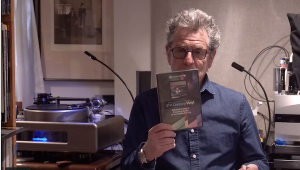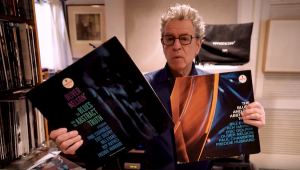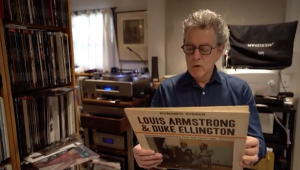Corin Tucker of Sleater-Kinney Tells Us Why Their Gut-Wrenching New LP Little Rope Sounds So Powerful on Vinyl, and Why QC’ing the Test Pressing Had a Lot to Do With It

The impetus for Sleater-Kinney’s powerful, personal, and punishing new LP Little Rope — out today, January 19, 2024, on Loma Vista — emerged from a devasting event experienced by one of their co-founding bandmembers. Rather than rehashing the particulars of that tragic event here (Google seek, and ye shall find), we are instead focusing on how this grrroundbreaking (extra r’s intended) Northwest-bred indie band — now essentially down to two of its core co-founding members, guitarist/vocalist Carrie Brownstein and vocalist/guitarist Corin Tucker — was able to channel pain into purpose on songs like the album-opening, trippy-Floydian descent into “Hell,” the pleading torture of “Say It Like You Mean It,” and the stark gut-punch of “Six Mistakes.”
“I think it’s a process of getting there for both the character and the song,” believes Tucker, who tackles the balance of the lead vocals. “I certainly don’t usually start out there — and, in the case of this album, it’s a process of getting into the performance and making it dramatic enough, and big enough. It’s trial and error as to how it’s coming across, and whether or not it’s delivering the right performance.”
As masters of the loud-soft-loud dynamic — and especially in knowing how to make sure both their low- and high-volume-challenging arrangements work on vinyl most especially — Sleater-Kinney have struck the exact right balance on all 33 minutes of Little Rope. The stats are these: The lacquers were cut by Bernie Grundman at Bernie Grundman Mastering, the same studio locale where the record was mastered. The source files were the first-gen digital masters, and the LPs were pressed at Memphis Record Pressing. Having long been proponents of the vinyl form, Sleater-Kinney are also offering a metallic gold variant for Little Rope (SRP: $24.99) in addition to the standard black vinyl edition ($22.99).
One thing is for sure — you will not leave the Little Rope listening experience unaffected. “It’s definitely a reflection of the heaviness we’ve been through, both personally and on a broader scale in the past few years,” Tucker believes. “That’s all here in the album.” The more you spin it, the deeper you get roped into it.
Tucker, 51, and I got on Zoom together recently to discuss why listening to test pressings remains such an important part of the band’s process, who the “bigger” audiophile in her family is and which high-end turntable proves the point, and why gauging the correct microphone distance is absolutely crucial for how her commanding vocal range is captured in the studio. Hell is just a signpost / When you take a certain path. . .

Mike Mettler: Tell me why vinyl is important for Sleater-Kinney, and how you choose your color variant options.
Corin Tucker: We grew up listening to vinyl, and I think it’s such a fun way to listen to music — and, yeah, we pick all the colors. We’re very picky about the artwork (chuckles), and having the vinyl complement the album artwork. That’s the fun part of the job for me.
Mettler: Did you think, starting out X number of years ago, that vinyl would be this important to you as an artist all these years later? Did you always think, “We have to put our records out on vinyl, because that’s how we grew up listening to music”?
Tucker: You know, I think that. . . (slight pause) the medium has changed over the years. There was a time when people were like, “Oh, CDs are really important.” (smiles) But I think we’re just at a point right now where vinyl is something people are listening to, and it’s something young people are excited about. We’re like, “That’s something we really love,” so it makes sense for us to offer our music that way. And we like doing that.
Mettler: What I like right out of the box on Little Rope with the opening song “Hell” is, you guys are always masterful at how you play with volume dynamics within songs. You usually have passages that are leading up to something really loud, where everybody’s hitting it maybe a little close to the red. On the production side of things, are you looking at the board and saying, “Okay, this part needs to be louder than that part, but is it going to get distorted?” Is there a technical angle to that for you, or is it just what feels right for that part of the song?
Tucker: It’s definitely what feels right for that part of the song. That’s kind of always how we’ve written — and we like drama in our writing. We like the ability to go from one emotion to the other, because I think that’s part of the journey that we’re writing about. So, yeah, we know that stuff’s going to get hot, and we try and maybe go a little into the red (both laugh) — but not enough to distort the vinyl when it comes out.
Mettler: Yeah, well, I think it’s okay to push the red a little bit because it wouldn’t be Sleater-Kinney without pushing the limits. Now, if I remember this correctly, you once told me that, during one of the first times you went to England, you went into a record store and found a 7-inch of The Day the World Turned Day-Glo by X-Ray Spex [released in 1978 on EMI International]. Does that sound about right?
Tucker: Yeah, yeah — I’m a huge, huge fan of X-Ray Spex, and I collected their singles when we went to London. Yeah, they’re amazing.
There’s a great exhibit right now in London at the Tate Britain called “Women in Revolt! [Art and Activism in the UK 1970-1990],” and it has all these articles and things about those bands in the ’70s and ’80s like X-Ray Spex, the Mo-dettes, and The Raincoats. Yeah, it’s pretty great.
Mettler: Besides the X-Ray Spex single, was there one record you bought for yourself that was like your “talisman” record?
Tucker: I think I purposefully bought Pat Benatar’s Get Nervous [released in October 1982, on Chrysalis], the one where she’s in the straitjacket.
Mettler: Right — and she’s got the “shock hair,” or whatever you want to call it.
Tucker: Yes! It’s very ’80s, but I loved the album cover. I loved this woman who seemed to be just really on the verge and had this incredible voice, you know? Like, what an inspiration.
Mettler: Yeah, I’ve always loved the incredible range of her voice. A strong, powerful woman like Pat Benatar doing her own thing her own way like that — did you maybe think, “Hey, I can do that too”?
Tucker: Yeah. I mean, I was really young at the time [Tucker was 9 years old when Get Nervous came out], but having this powerful woman who was just fully in charge of her career and really gutsy — I think that was a great inspiration for me.
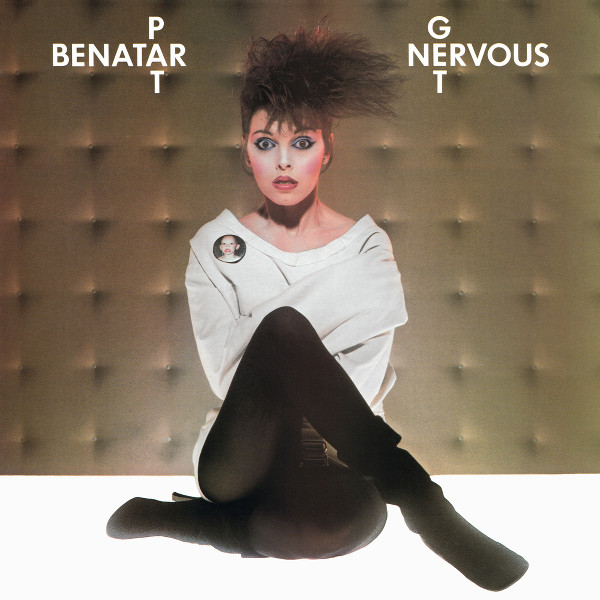
Mettler: I can totally see that. What kind of turntable did you have back then? Do you remember what you had back in the day as a young, formative music listener?
Tucker: Back in the day? I can’t remember what it was, but I do remember having one in my room. And, gosh, I really loved the weirdest K-Tel collections they would come out with, you know? Those albums were just weird — collections of disco at the end of the ’70s and the beginning of the ’80s, like “Upside Down.”
Mettler: Oh yeah, that great Diana Ross track [which hit No. 1 in 1980, and was initially released on Motown].
Tucker: Yes! I just saw her perform that song this [past] summer, which was such a nice, full-circle moment of like, “Wow! What a career.”
Mettler: Whenever you hear a song like “Upside Down,” you know exactly where you were and what you were feeling when you first heard it. That also sounds like a goal of Sleater-Kinney as a band — to be able to give that kind of experience to your listeners. Is that fair to say?
Tucker: Yeah! I mean, if possible, that’s exactly it! It’s like building a song that drops you into that moment — in that world — so completely that it captivates you. That’s the ultimate goal as a songwriter — to build something that is undeniable like that to the listener.
Mettler: Right. What kind of turntable are you listening to albums on these days?
Tucker: Oh my gosh. I would have to go look. If you want me to show you, I can.
Mettler: Yeah — if you don’t mind, actually, we’d love to see it.
Tucker: Okay. (Tucker walks with laptop in hand to where playback gear and other equipment is located) Well, we have several turntables. (chuckles) So, I have to say I’m not actually the biggest audiophile in my home — it’s actually my partner [filmmaker Lance Bangs]. He’s got this very unique turntable. (Tucker turns the laptop around so we can see the ’table as shown below, and then she affects quite the proper voice while naming it) It’s a Nottingham [Analogue Studios] Space 294.
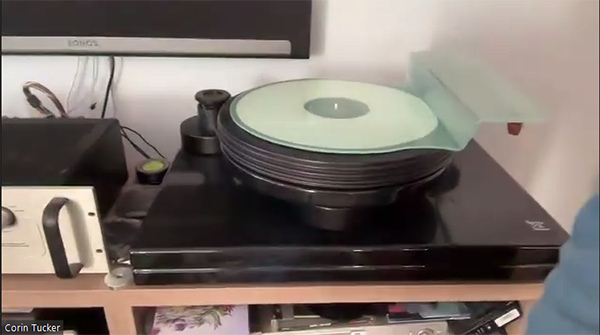
Mettler: Oh, yeah — now we’re talking. That’s fantastic. That is a beautiful piece. Perfect! (Tucker laughs) Did you listen to the test pressings for Little Rope on that particular turntable?
Tucker: Yes, I did.
Mettler: Did you hear anything that made you go, “Hey, we need to bring this up a little bit,” or “We need to do something else here”? Did you have any comments to share after you heard it?
Tucker: Oh, well, “Hunt You Down” (Side 1, Track 4) is a really big song, and it’s got to sound fantastic on vinyl — and it did, on that test pressing. I was happy with that.
To be honest, we had a choice of two different plants [to press the album]. As you know, we have really long waiting times for vinyl, and we were concerned about that. But the vinyl we chose from Loma Vista was miles away better than the first option we had. They did an excellent job. Like I said, I listened to two different choices, and I was like, “Oh, yeah. The Loma Vista vinyl is excellent.”
Mettler: Glad to hear that. Now, what you do in the back half of “Untidy Creature” (Side 2, Track 5), about three minutes into it where it just kind of becomes this long wail — was that an organic thing? Did you know you were going to do that while you guys were recording, or did it just come out of you?
Tucker: That actually happened when we were writing the song. I think it was meant to be an emotional unleashing at the end of this very tight-feeling song. After I did it, I was like, “I don’t know if this song works. I don’t know if this fits, but this is just my idea of the song.” And we went into the studio that way. (laughs) I said to John [Congleton, the producer of and drummer on Little Rope], “So, this is the part of the song where I’ll just be wailing at the end.” And he was like, “Maybe take a step back from the mike.” And I was like, “Okay.” We just tried stuff in the studio to see if it worked — and everyone thought that it did, so we kept it.
Mettler: Are you always in the same spot when you’re singing into the microphone, or do you move physically around it? Do you think, “This is my sweet spot when I’m thisclose,” or do you move your head around for dynamics? Do you think about it that specifically?
Tucker: I do try and move back when I get loud — because I’ve been asked to, so many times. (both laugh) Yeah, I’ve definitely freaked out several audio engineers over the years, so I try and be more accommodating. But, yeah, it’s a tricky thing when you’re going from really quiet to really loud. I think one of the things about working with a producer like John Congleton on this album is, that’s his forte — getting those performances, and understanding a singer and what they’re capable of.
And he’s very quick. He was quick to get it. I think John’s skill as a composer and arranger is to be able to add this whole other layer of depth to the song. He’s really good on a song like “Hell” (Side 1, Track 1) with that kind of eerie soundscape that happens in the beginning.
Mettler: Was “Hell” always going to be the album opener? Did you guys have the sequence worked out in advance, or did you have to play with it a little bit?
Tucker: That one really struck everyone as a great opener because it was so dramatic, and it dropped us into this world that was a metaphor for so many things. It has such quiet/loud, dark/light elements to it. It seemed like it would always set the stage for the album.
Mettler: Did you guys change anything in the running order after you heard the test pressing, or did just kind of flow naturally?
Tucker: We worked on the sequencing a lot — a lot. We worked on it a lot before we did the vinyl pressing, and we cut down a lot of songs. I mean, there were like three or four we didn’t put on the album because we wanted things to be really potent. We wanted the sequence to be really concise. So, yeah, we worked on it a long time before we got to the vinyl.
Mettler: I think Little Rope is perfectly sequenced. I’m getting two sides of the story, quite literally, and each time I flip a side over, the story reveals itself a little bit more to me. “Six Mistakes” (Side 2, Track 2) takes on a deeper meaning the more I hear it, for example. And when we get back to your wailing moments at the very end of “Untidy Creature” at the end of Side 2, the payoff there is so great after the first 30-plus minutes of the whole album. If that song was first, it wouldn’t make as much sense. If “Hell” and “Untidy Creature” were flipped in the running order, it wouldn’t exactly hit us the same way.
Tucker: I’m so glad you think that, because I really pay attention to sequencing — and I think about vinyl. I think about sides, and that’s what we really want for the listener — that experience to feel like you’ve been on a journey, you know?
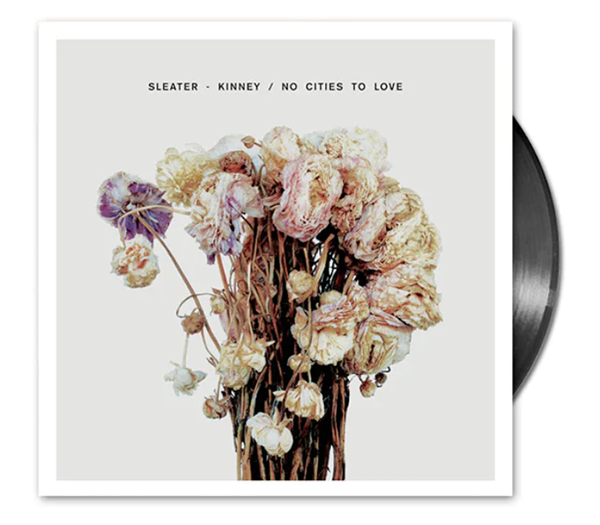
Mettler: I totally agree. Now, in the Sleater-Kinney catalog, what other records of yours do you feel are perfectly sequenced? [April 1997’s] Dig Me Out is maybe an obvious example, but is there something else in the middle there that works for you, sequence-wise?
Tucker: Hmmm. I mean, we worked pretty hard on the No Cities sequencing [i.e., for January 2015’s No Cities to Love]. I feel like we did a pretty good job on that one too. We always work on it, and pay attention to it.
I think Dig Me Out was one of those things where everyone was like (chuckles), “Okay, take a piece of paper, go away, write down your sequence” — and then we’d just argue about it while we were mixing it. (MM laughs)
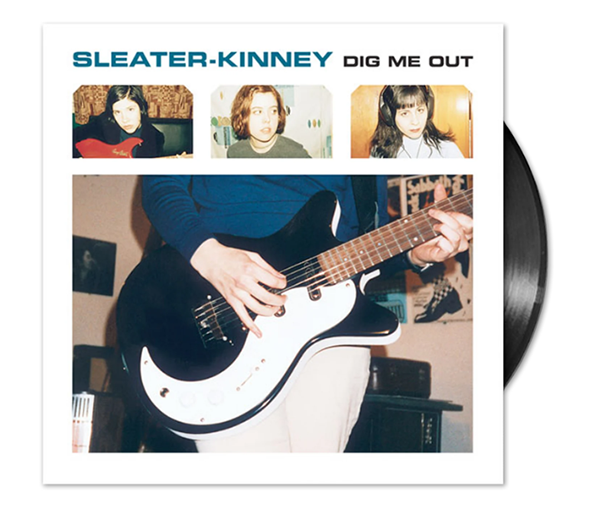
I take the sequence so seriously that I feel like once we all agree on it, it’s set in stone, you know? I mean, we messed with it when we had the covers album, [October 2022’s] Dig Me In. Well, actually, I don’t think we changed the sequence, even then. We just changed the artists doing the covers. (chuckles heartily)

Mettler: Change can sometimes be exactly what’s needed in the moment. (more laughter) So, okay, to wrap things up, I’m going to throw us 50 years into the future, where it’s 2074. And, as I like I say, unless there’s some weird science stuff going on, we’re probably not physically on the planet at that point. With whatever the way people listen to music in 2074 is, and they type in the name “Corin Tucker,” or “Carrie Brownstein,” or “Sleater-Kinney” into their listening device, what type of experience do you want that person to get out of your music?
Tucker: Hmmm. That’s a great question. I think that, ideally, they do experience a journey with our albums — kind of like how you would open a book from 50 years ago and you get a taste of the time and place that it comes from, what was going on culturally, and what was going on in the world around us at the time. I mean, that’s what we would like for the listener to experience — especially with this album [i.e., Little Rope]. That’s really what we want for people.
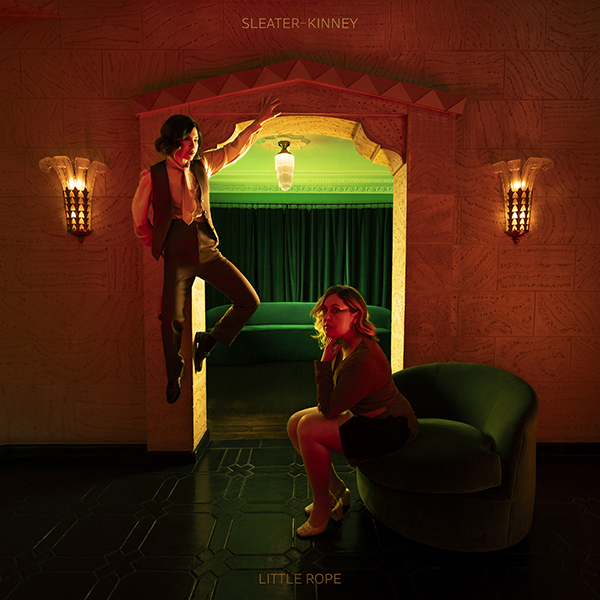
SLEATER-KINNEY
LITTLE ROPE
1LP (Loma Vista)
Side One
1. Hell
2. Needlessly Wild
3. Say It Like You Mean It
4. Hunt You Down
5. Small Finds
Side Two
1. Don’t Feel Right
2. Six Mistakes
3. Crusader
4. Dress Yourself
5. Untidy Creature











